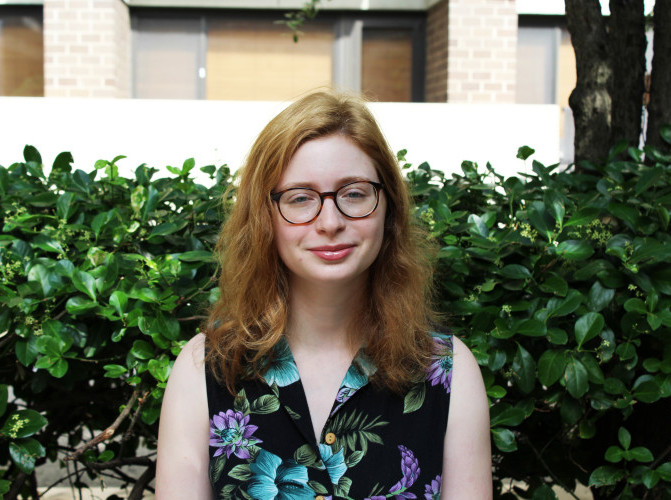Environmental Monitoring Intern: Jocelyn Zorn

Jocelyn Zorn is an environmental science student at Sarah Lawrence College, and will be spending her final semester as an undergraduate studying tropical biology in Costa Rica this fall. She is working on monitoring the ongoing environmental restoration of Freshkills Park this summer.
What is your name and title?
My name is Jocelyn Zorn and I’m one of the two Environmental Monitoring Interns at Freshkills Park.
What are you working on?
As an Environmental Monitoring Intern, my main tasks this summer consist of compiling previously collected landfill monitoring and ecological restoration data into comprehensive reports and assisting with monitoring the ongoing restoration of the North Park wetlands.
Formerly located within the world’s largest landfill, the North Park wetlands at Freshkills Park are currently being re-established as a native salt marsh ecosystem, a transition which will support increased biodiversity and improved ecosystem services. In order to evaluate the success of this transition, I am assisting with compiling an annual monitoring report that focuses on changes in vegetation, colonization by benthic invertebrates, and utilization by macrofauna. Collecting this data means that I am lucky enough to spend a lot of time outdoors in the park doing hands-on scientific fieldwork. Along with previously collected data that I am compiling, I will analyze the monitoring report data to make assessments about the progress of the ecological restoration and support other scientific and educational projects at the park.
During the course of my internship I will also be designing and conducting my own independent research project. I have the rare opportunity to work in a grassland environment as these habitats decline throughout the United States. My research project will involve comparing different grassland locations at Freshkills Park to assess the preferred habitat characteristics of grassland bird species as they return to the park. This research is particularly important at a time in which bird species that rely on grasslands are declining due to the disappearance of their habitats.
What drew you to Freshkills Park?
During an era of global change, it is important to me that I actively involve myself in projects that are aimed at reversing harmful anthropogenic impacts on the environment. Freshkills Park is a perfect example of how human innovation can be both positive and negative to the environment; humans built the world’s largest landfill here, and now humans are building grasslands and wetlands at the same exact location, but on top of tons and tons of trash. Seeing this kind of initiative is inspiring in a time where most environmental news is dismal, and it sends a powerful message as to what humans are capable of in the wake of ecological crisis.
What’s one way to send less waste to landfills?
The best way to decrease waste is source reduction. Consuming less starts with simply being mindful of the amount of waste we produce, which can be difficult to realize when we live in a society where our garbage seems to just disappear once disposed of. Once we start to notice how much we throw out, it can encourage us to cut back. Avoiding products with excessive packaging is a good start, while cutting out single-use products and making sure that our purchases will have a long lifespan between purchase and disposal saves money and minimizes waste. I recommend buying a sturdy reusable water bottle and getting in the habit of bringing it everywhere you go, even when you don’t think you’ll need it.
Favorite color?
I love light pinks and blues, like the colors of the sky during sunset.




